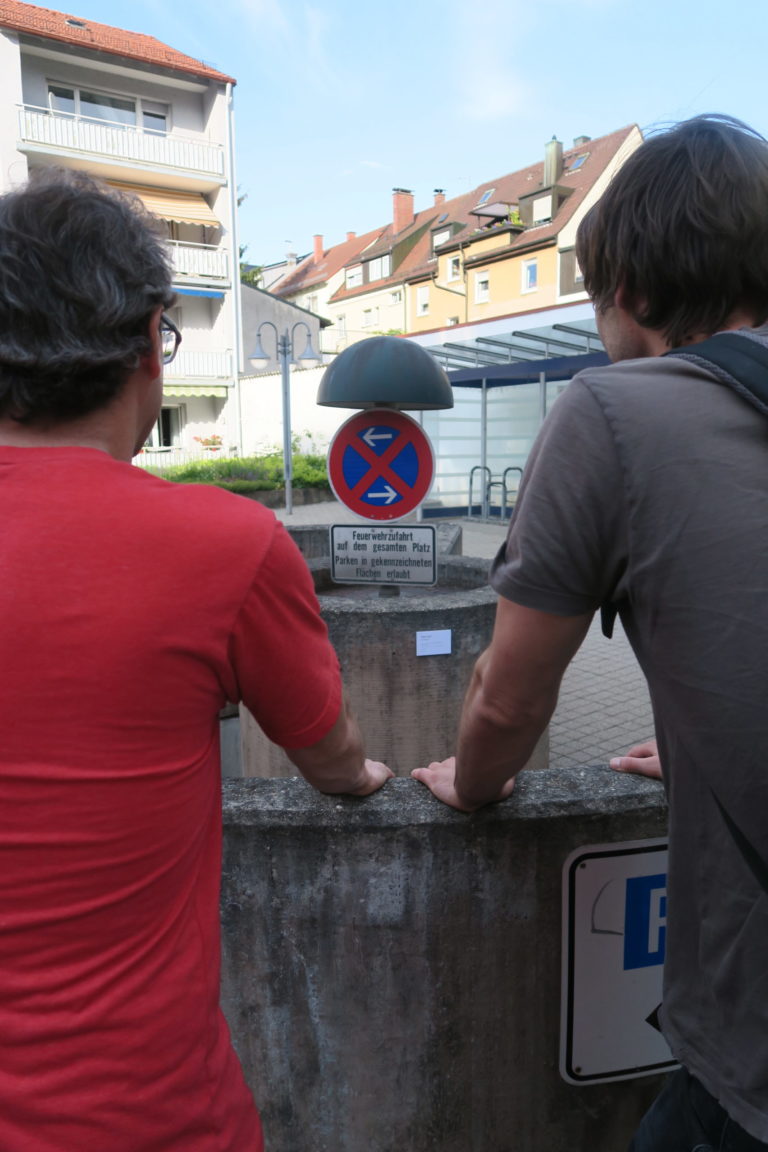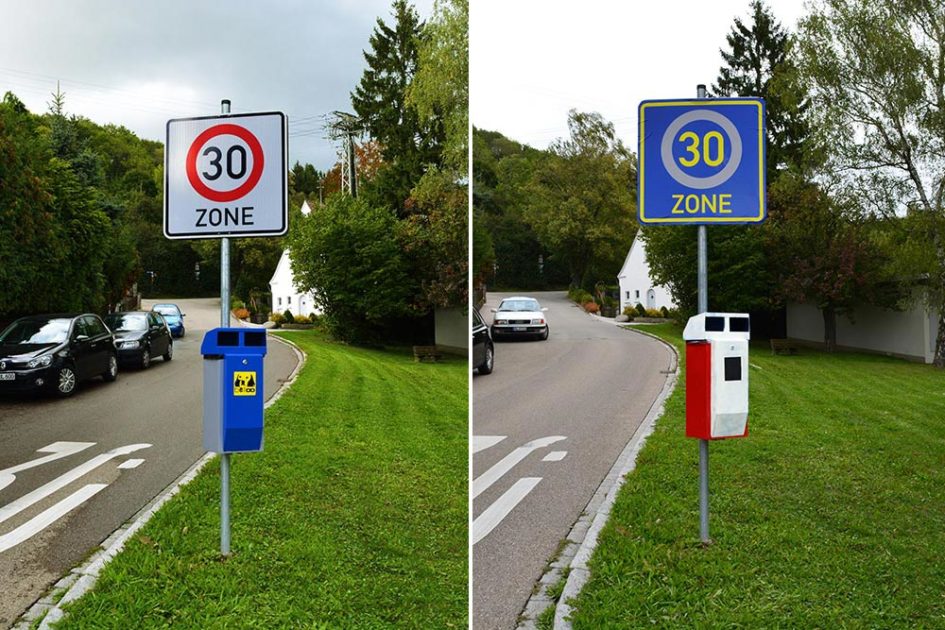Unusual encounters and new perspectives on the urban environment
Date: Mai – October 2017
Location: Ulm, Germany
Organizations: Griesbadgalerie (project space), Stiege (project Space)
Role: Principal curator, concept, graphic design, fundraising, organization, realization, public relations
Project Team: Petra Schmitt (co-principal curator), Tommi Brem (curator), Florian Hägele (technical support)
Artists: Bastian Hoffmann, Biancoshock, Isaac Cordal, Nicolas Vionnet & Wouter Sibum, Robert Verch & Martin Schotten
Collaborators: Joe Rocher (metal worker), Sebastian Neubig & Jochen Menes (carpenters), Zimmermann Gerüstbau (scaffolders)
Supporters: City of Ulm, City of Neu-Ulm, Züplin (construction company)

“Alles Muss Raus” is an expression typically used in Germany as announcement for sales. As such, it is a common element of language in urban space that we repurposed for our public art series. The urban space fulfills an important function as a place of meeting and exchange. Through the encounter with the other, common perspectives are called into question and new ways of perception can open up. The project spaces Griesbadgalerie and Stiege Ulm explored this potential in the project series “Alles Muss Raus”. The “other” in this case not only means the human counterpart but also different modes of perception and hidden potentials in the familiar surrounding. The series featured a variety of approaches employing objects, actions and text as offers for new and unusual encounters in and with urban space.
The series beaks conventions of perception and explores hidden potential in public space
Deklarismus, Robert Verch & Martin Schotten
In their project declarismus.org, Robert Verch and Martin Schotten employed the gaze of a museum visitor in public space. Anyone who engaged in their thought experiment could discover the poetry of everyday life on the street. The two Artists scanned the city for objects that don’t disclose themselves to the viewer at the first glance, raise open questions and are aesthetically interesting and thus could be regarded as art. If an object met the evaluation criteria set by the two artists, it was labeled with a plaque like in a museum. The actual showrooms of the project spaces Griesbadgalerie and Stiege were turned into an archive and a cafeteria / shop.
Isaac Cordal (Brussels, Galicia) hides his work at the edged and in the dark corners of urban spaces. His series “Cement Eclipses” consists of human figures in miniature format. As a passer-by you could encounter them chance in drains, on the roofs of bus stops or spot them at the top of street lamps. The silent little men made of cement tell sad stories of failure. Given they are discovered at all, they likely earn the viewer’s sympathy. Sometimes the bizarre scenes remain ambiguous in terms of content, sometimes the artist uses references to social issues such as the Euro crisis or climate change. We showed Cordals work both in an indoor show at Griesbadgalerie and in public space. The figures that were positioned in Ulm could be found only with the help of a paper map that was available during the exhibition period – or by chance. They were left to their own fate and possibly are still there.
Cement Eclipses, Isaac Cordal
Ephemeralism, Bianco Shock
Bianco Shock (Milan) creates temporary interventions as response to situations that he finds in public space. He calls his work “ephemeralism”, avoiding the term art. Bianco Shock stages situations with the props of everyday life. He produces images that surprise and challenge the viewer. Often are his works are spontaneous, partly they are political, but always they inherit a subtle humor. As part of our series, the artist worked with sign language in public space that is a fixed element of our everyday environment and often escapes conscious perception. Moreover he used the river Danube as a stage for an allegory on the situation of people seeking refuge in Germany.
Nicolas Vionnet (Zurich) and Wouter Sibum (Rotterdam) seek new perspectives and contexts behind the everyday surrounding. In Griesbadgalerie the two artists showed existing works that reflect on urban design and human-built objects that shape social interactions. As a team, Vionnet and Sibum design installations for public places. At first, their works seem irritating, like urban design that is a little out of place. At second glance, they the temporary interventions tell stories about the sites where they take place. In Ulm, the two artists chose to work with “Taubenplätzle” a small public square in the middle of the city in close proximity to two art institutions. They revitalized the remains of the dolphin fountain that had formerly lend ambience to the square until it was relocated in the course of an urban design enterprise in the early 2000s.
Alles Muss Rein, Nicolas Vionnet and Wouter Sibum
Stark reduziert, Bastian Hoffmann and Stefan Klein
Bastian Hoffmann (Cologne) and Stefan Klein (Berlin) work in different ways with the element of reduction. Their works are often barely visible, while addressing viewers on the level of the concept and idea. An untitled work by Bastian Hoffmann appars like a plexiglass arch. However it actually is a water beam that is smoothed out with sophisticated system of tubes and pumps to make its movement invisible. In public space, we built his work “Permanent Puddle”, a puddle, equipped with a buried water tank and an electronic sensor that prevents it from drying out. Stefan Klein is interested in the idea, the abstract assumption behind the physical world. Accordingly, words are his preferred artistic medium. For example, he produces magazines, artist books and other micro publications under his self-created label VERLAK. His sculptural work, that we created in a public space in Ulm also uses words as dominant element. The title is “Setup for Nothing”.





























